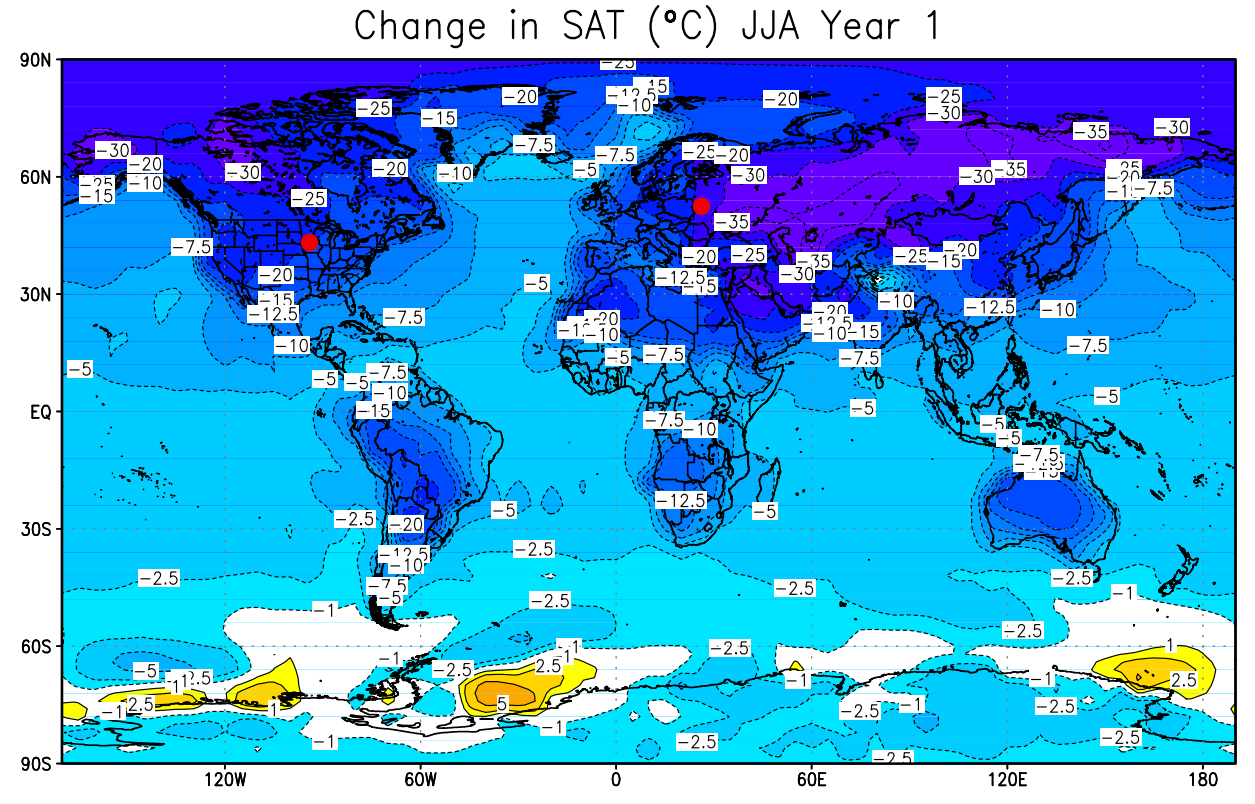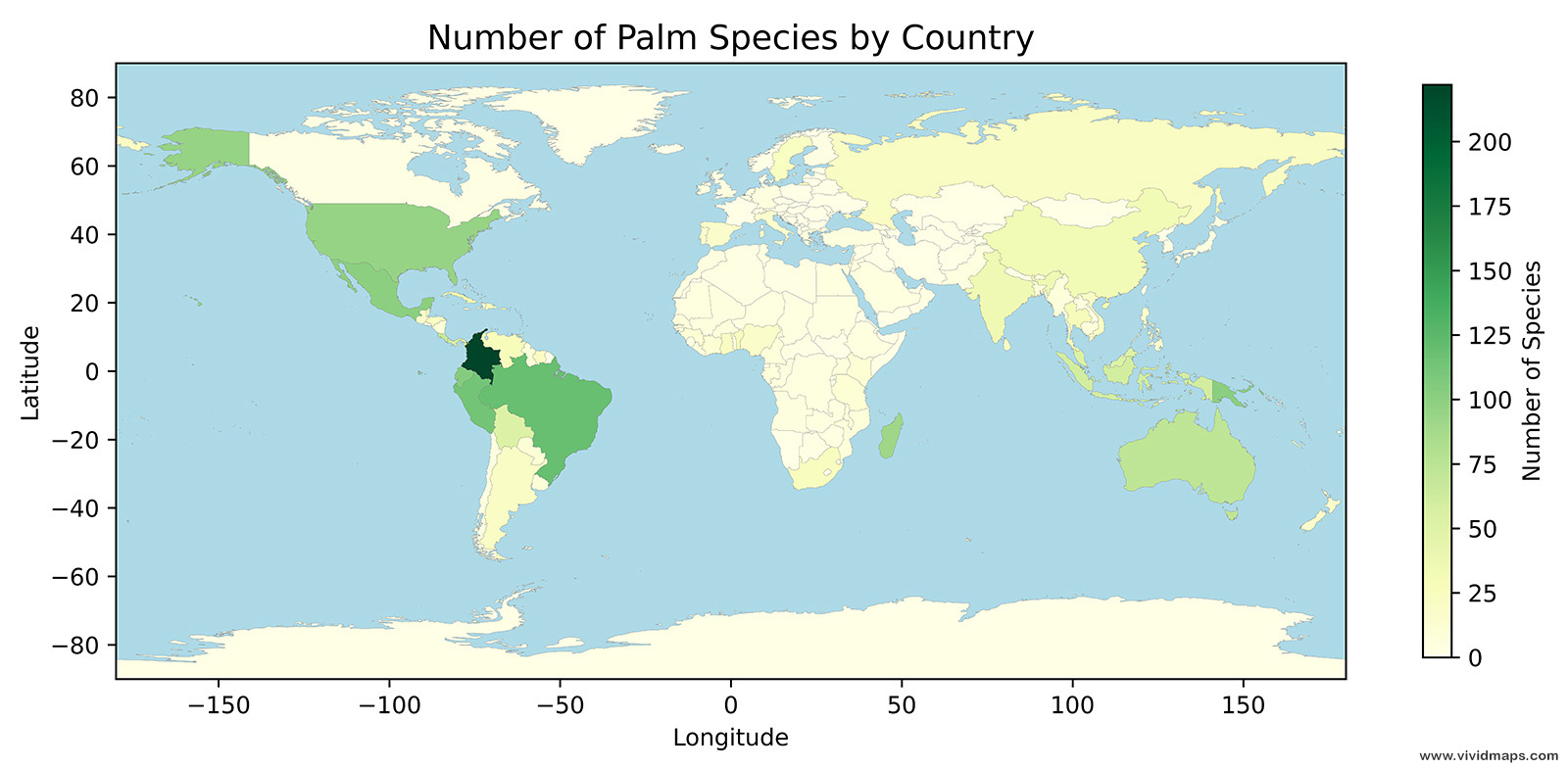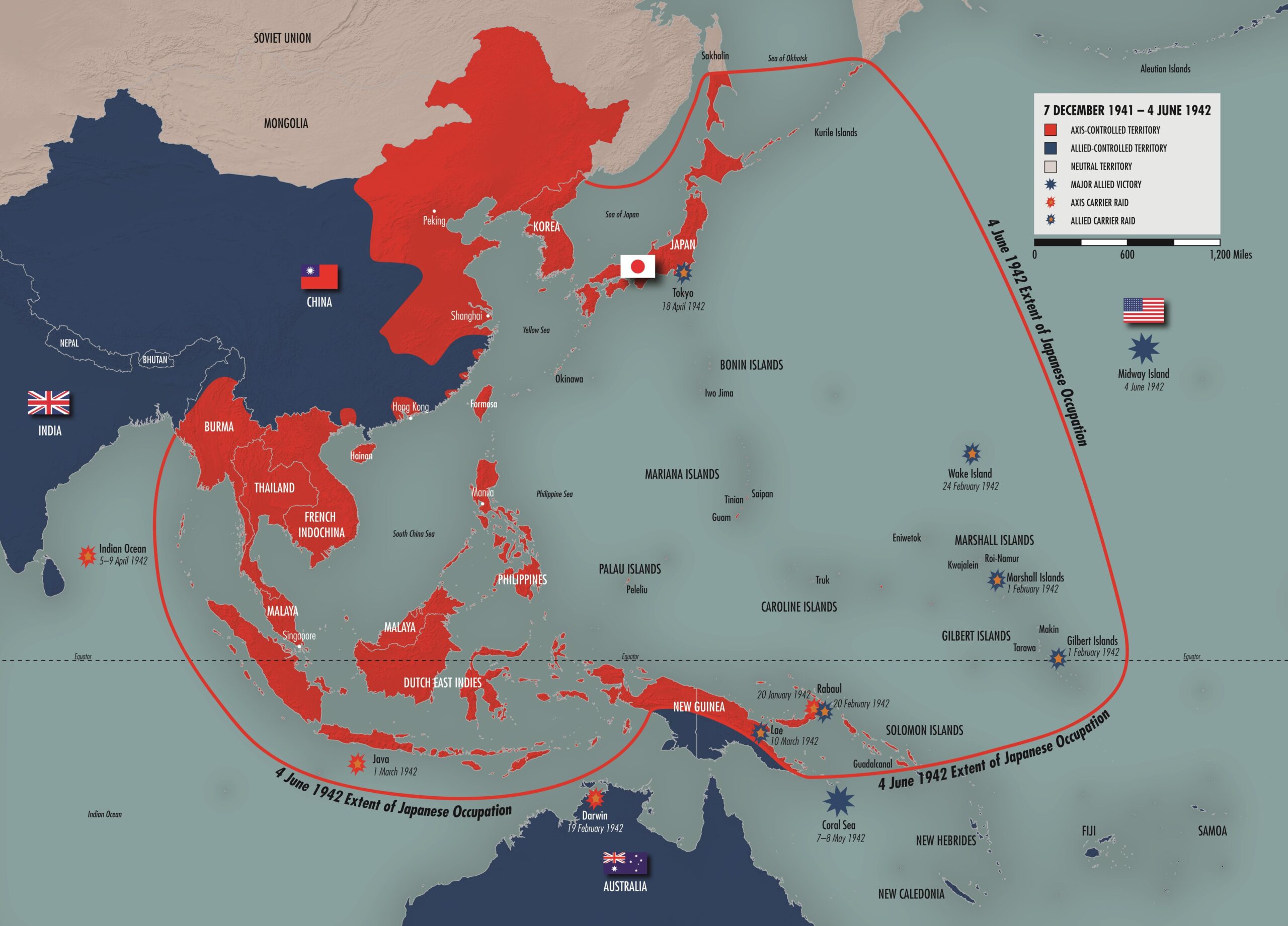Blast Radius of the Fat Man Nuclear Bomb Transposed to other Major World Cities
The morning of August 9, 1945, forever changed the face of modern warfare. At 11:02 AM, the plutonium bomb nicknamed “Fat Man” detonated over Nagasaki, Japan, marking the second and final time nuclear weapons were used in combat. While 78 years have passed since that fateful day, understanding the scale of nuclear destruction remains critically important as global tensions continue to evolve.
The Historical Context
The bombing of Nagasaki came just three days after Hiroshima. According to the Bulletin of the Atomic Scientists, the combined death toll from both attacks reached approximately 200,000 people. The Japanese surrender followed on August 14, bringing World War II to its conclusion.
Today, the threat of nuclear weapons hasn’t diminished. The Federation of American Scientists reports that nine countries currently possess approximately 12,121 nuclear warheads, with many modern devices far exceeding the destructive power of the World War II bombs.

Understanding the Blast Zones
Based on data from NUKEMAP and Richard Rhodes’ “The Making of the Atomic Bomb,” (Amazon link) the Fat Man’s destruction radius can be broken down into five devastating zones:
1. The Nuclear Fireball (0.2km radius)
- Ground zero impact zone covering 0.13 square kilometers
- Height of detonation crucial for fallout levels
- Minimum height of 180m needed to minimize fallout
2. Severe Blast Zone (0.76km radius)
- 1.82 square kilometers of near-total destruction
- Concrete structures demolished
- Nearly 100% fatality rate
- Optimal detonation height: 490m
3. Lethal Radiation Zone (1.31km radius)
- Covers 5.42 square kilometers
- 50-90% mortality rate from 500rem exposure
- Death occurs within hours to weeks
4. Building Collapse Zone (1.72km radius)
- 9.26 square kilometers of structural devastation
- Universal injuries and widespread deaths
- Most residential buildings destroyed
- Optimal burst height: 850m
5. Thermal Radiation Zone (2.21km radius)
- Extends across 15.4 square kilometers
- Severe third-degree burns throughout skin layers
- High risk of permanent disability
- Potential need for amputation
Modern City Comparisons
The visualization above places these destruction zones over 19 major world cities, centered on significant landmarks. This provides a stark illustration of how densely populated urban centers would be affected today. The selected locations, from the Burj Khalifa in Dubai to the Palace of Westminster in London, represent centers of government, commerce, and culture that would be devastated by such an attack.
A Note on Nuclear Proliferation
While the Fat Man was a 20-kiloton device, modern nuclear weapons can be hundreds of times more powerful. The Arms Control Association emphasizes that current arsenals pose an even greater threat to urban populations, with some warheads exceeding 1 megaton in yield.
Further Reading on Nuclear History and Preparedness
For readers interested in exploring this topic further, here are some highly-rated books available on Amazon that provide deeper insight into nuclear weapons, their development, and their impact on modern history:
- The Making of the Atomic Bomb by Richard Rhodes – A Pulitzer Prize-winning account of the scientific and political forces that led to the creation of nuclear weapons.
- Command and Control: Nuclear Weapons, the Damascus Accident by Eric Schlosser – A gripping investigation into nuclear weapons safety and the risks we’ve faced over the decades.
- Atomic Geography: A Personal History of the Hanford Nuclear Reservation by Melvin R. Adams – A unique perspective on one of America’s most significant nuclear sites.
- Nuclear War Survival Skills by Cresson H. Kearny – A practical guide to understanding and preparing for nuclear threats.
(Note: The links above are Amazon affiliate links. As an Amazon Associate, I earn from qualifying purchases.)









Not even sure what the point of this is. Our nukes today are roughly 45-75 TIMES more powerful than the first nukes ever used. You’re talking roughly 20 kt bombs vrs 600-1200 kt intercontinental ballistic missiles. The Tsar bomb tested in the 1960s produced a 50 megaton blast aka 50’000 kt and could have been loaded with 100 megatons but wasn’t due to fallout concerns. Might as well start transposing those blast radius over states not cities.